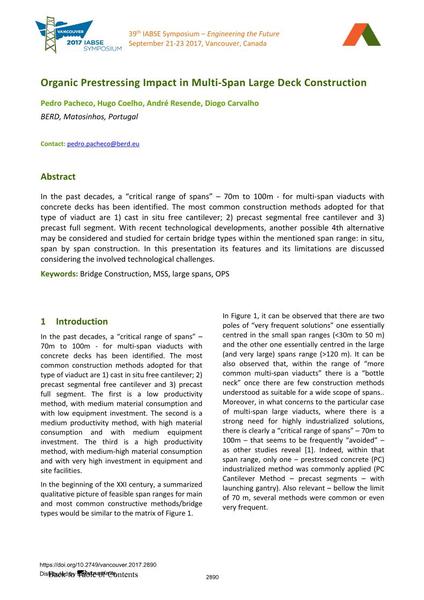Organic Prestressing Impact in Multi-Span Large Deck Construction

|
|
|||||||||||
Détails bibliographiques
| Auteur(s): |
Pedro Pacheco
(BERD, Matosinhos, Portugal)
Hugo Coelho (BERD, Matosinhos, Portugal) André Resende (BERD, Matosinhos, Portugal) Diogo Carvalho (BERD, Matosinhos, Portugal) |
||||
|---|---|---|---|---|---|
| Médium: | papier de conférence | ||||
| Langue(s): | anglais | ||||
| Conférence: | IABSE Symposium: Engineering the Future, Vancouver, Canada, 21-23 September 2017 | ||||
| Publié dans: | IABSE Symposium Vancouver 2017 | ||||
|
|||||
| Page(s): | 2890-2897 | ||||
| Nombre total de pages (du PDF): | 8 | ||||
| Année: | 2017 | ||||
| DOI: | 10.2749/vancouver.2017.2890 | ||||
| Abstrait: |
In the past decades, a “critical range of spans” – 70m to 100m - for multi-span viaducts with concrete decks has been identified. The most common construction methods adopted for that type of viaduct are 1) cast in situ free cantilever; 2) precast segmental free cantilever and 3) precast full segment. With recent technological developments, another possible 4th alternative may be considered and studied for certain bridge types within the mentioned span range: in situ, span by span construction. In this presentation its features and its limitations are discussed considering the involved technological challenges. |
||||
| Mots-clé: |
construction de ponts
|
||||
